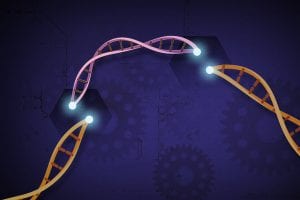A successful CRISPR-Cas9 treatment of Progeria in mice may be the beginning of anti-aging in humans.
When Juan Carlos Izpisua Belmonte set out to study “the molecular drivers of aging,” he could not have picked a more appropriate disorder than Progeria. Progeria is an accelerated aging disorder “caused by a mutation in the LMNA gene.” In both mice and humans, progeria induces many symptoms of aging, such as “DNA damage, cardiac dysfunction and dramatically shortened life span,” early in life. Molecularly, Progeria “shifts the production of lamin A,” a protein, ” to progerin,” a toxic form of lamin A that builds up with age.
In order to “to diminish the toxicity from the mutation of the LMNA gene that leads to accumulation of progerin inside the cell,” the Belmonte-led group used CRISPR-Cas9 to disrupt both lamin A and progerin. To do so, RNA first guides Cas9 to a spot on the DNA. Then, it makes a cut that “renders lamin A and progerin nonfunctional.”
As a result, the treated mice enjoyed a 25% longer life span and were stronger and more active. The successful treatment bodes well not only for mice, but for humans. In the future, “efforts will focus on making the therapy more effective” and compatible for humans.



Leave a Reply